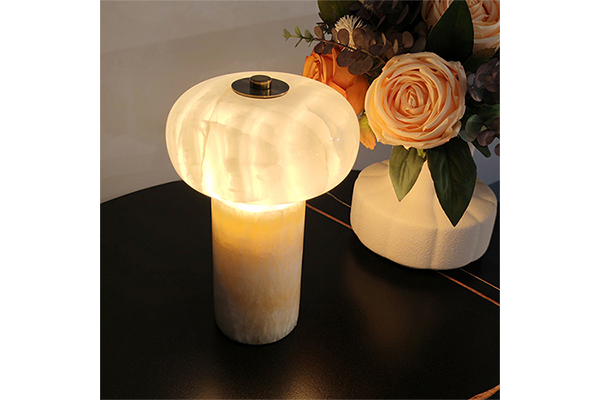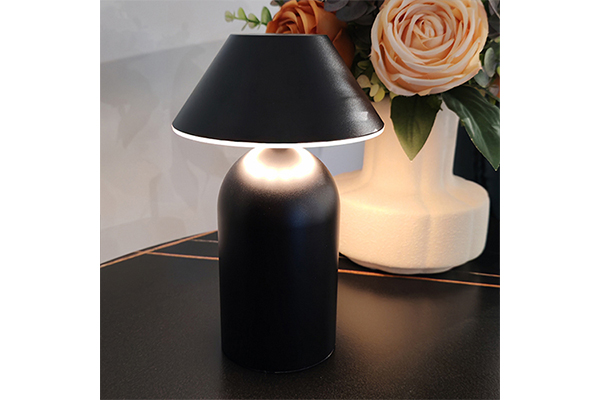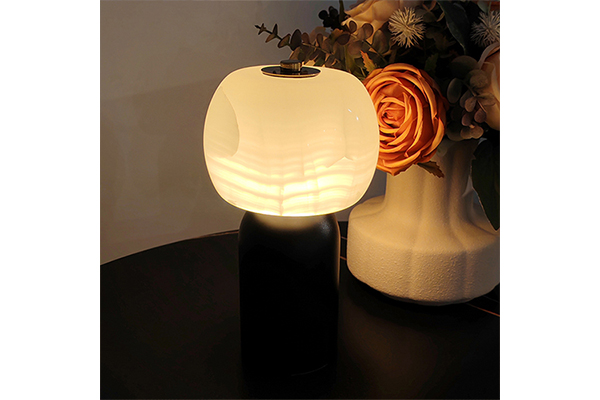How do you balance light transmission and light blocking with a fabric lampshade table lamp?
Release Time : 2025-10-22
In commercial spaces like restaurants, hotels, and clubs, where creating atmosphere is paramount, fabric lampshade table lamps, with their warm, soft light quality and rich design expression, have become a crucial lighting element that enhances the space's style. However, striking a balance between light transmission and light blocking is a core challenge in the design and application of fabric lampshade table lamps. Insufficient light transmission results in dim lighting, impacting functionality; insufficient light blocking results in excessive light leakage, creating glare and disrupting the atmosphere.
1. Light Transmission: The Key to Creating a Warm Atmosphere
The appeal of fabric lampshade table lamps lies in their unique soft light effect. Unlike glass, metal, or plastic, fabric has a naturally diffuse reflective property, evenly scattering the direct light from a bulb, creating soft, shadowless indirect lighting. This "light without lamp" lighting effect is precisely the source of the warmth, privacy, and luxury sought in venues like restaurants and hotels. A fabric lampshade table lamp with good light transmittance allows for ample light to illuminate the tabletop or bedside area, meeting basic lighting needs. For example, in a restaurant, a moderately light-transmitting lampshade can focus light on the table, highlighting the colors of food and enhancing appetite. In a hotel room, it can provide an auxiliary light source for nighttime reading, enhancing comfort.
2. Light Blocking: Controlling Glare and Protecting Visual Comfort
While light transmittance is important, excessive light transmittance can result in a clearly visible bulb outline, creating harsh glare, especially when using high-brightness LED bulbs. This not only affects visual comfort but can also disrupt the overall light and shadow structure of the space. Therefore, a fabric lampshade table lamp must provide a certain degree of light blocking to shield direct light from the source. Designers typically enhance this by adding layers of fabric, choosing high-density fabrics, or adding lining. Lining not only effectively blocks direct light but also enhances the structural stability of the lampshade, preventing deformation. In high-end hotels, a double-layer structure is common: the outer layer is decorative fabric, showcasing texture and color; the inner layer is matte blackout fabric, ensuring soft and even light distribution and preventing "bulb exposure."
3. Structural Design: Optimizing Light Distribution
In addition to the material, the shape and structure of the lampshade also influence the balance of light efficiency. Common umbrella-shaped, drum-shaped, or tapered designs can direct light downward, reduce upward spillage, and improve lighting efficiency. Furthermore, the size and height of the lampshade opening must be precisely matched to the position of the bulb: too small an opening can lead to insufficient light, while too large can cause glare. Some high-end fabric lampshade table lamps also feature a gradient weave or partially thickened finish to achieve intelligent light control effects by shading the upper portion and allowing light to pass through the lower portion, further enhancing the visual experience.
4. Bulb Matching: The Light Source Determines the Final Light Quality
Even with the most sophisticated lampshade design, the choice of light source is crucial. It is recommended to use LED bulbs with a low color temperature and anti-glare design, avoiding transparent or high-brightness bare bulbs. A frosted bulb or an LED light source with a milky white shade can work synergistically with a fabric lampshade table lamp to further soften light and reduce hotspots and glare.
The light transmittance and light-blocking properties of a fabric lampshade table lamp are not mutually exclusive; instead, they can be harmoniously integrated through material selection, lining design, structural optimization, and light source matching. In restaurants and hotels, where lighting requirements are extremely high, an excellent fabric lampshade table lamp can provide sufficient functional lighting while creating a warm, comfortable, and richly layered atmosphere, truly achieving the perfect fusion of "light and beauty."
1. Light Transmission: The Key to Creating a Warm Atmosphere
The appeal of fabric lampshade table lamps lies in their unique soft light effect. Unlike glass, metal, or plastic, fabric has a naturally diffuse reflective property, evenly scattering the direct light from a bulb, creating soft, shadowless indirect lighting. This "light without lamp" lighting effect is precisely the source of the warmth, privacy, and luxury sought in venues like restaurants and hotels. A fabric lampshade table lamp with good light transmittance allows for ample light to illuminate the tabletop or bedside area, meeting basic lighting needs. For example, in a restaurant, a moderately light-transmitting lampshade can focus light on the table, highlighting the colors of food and enhancing appetite. In a hotel room, it can provide an auxiliary light source for nighttime reading, enhancing comfort.
2. Light Blocking: Controlling Glare and Protecting Visual Comfort
While light transmittance is important, excessive light transmittance can result in a clearly visible bulb outline, creating harsh glare, especially when using high-brightness LED bulbs. This not only affects visual comfort but can also disrupt the overall light and shadow structure of the space. Therefore, a fabric lampshade table lamp must provide a certain degree of light blocking to shield direct light from the source. Designers typically enhance this by adding layers of fabric, choosing high-density fabrics, or adding lining. Lining not only effectively blocks direct light but also enhances the structural stability of the lampshade, preventing deformation. In high-end hotels, a double-layer structure is common: the outer layer is decorative fabric, showcasing texture and color; the inner layer is matte blackout fabric, ensuring soft and even light distribution and preventing "bulb exposure."
3. Structural Design: Optimizing Light Distribution
In addition to the material, the shape and structure of the lampshade also influence the balance of light efficiency. Common umbrella-shaped, drum-shaped, or tapered designs can direct light downward, reduce upward spillage, and improve lighting efficiency. Furthermore, the size and height of the lampshade opening must be precisely matched to the position of the bulb: too small an opening can lead to insufficient light, while too large can cause glare. Some high-end fabric lampshade table lamps also feature a gradient weave or partially thickened finish to achieve intelligent light control effects by shading the upper portion and allowing light to pass through the lower portion, further enhancing the visual experience.
4. Bulb Matching: The Light Source Determines the Final Light Quality
Even with the most sophisticated lampshade design, the choice of light source is crucial. It is recommended to use LED bulbs with a low color temperature and anti-glare design, avoiding transparent or high-brightness bare bulbs. A frosted bulb or an LED light source with a milky white shade can work synergistically with a fabric lampshade table lamp to further soften light and reduce hotspots and glare.
The light transmittance and light-blocking properties of a fabric lampshade table lamp are not mutually exclusive; instead, they can be harmoniously integrated through material selection, lining design, structural optimization, and light source matching. In restaurants and hotels, where lighting requirements are extremely high, an excellent fabric lampshade table lamp can provide sufficient functional lighting while creating a warm, comfortable, and richly layered atmosphere, truly achieving the perfect fusion of "light and beauty."










